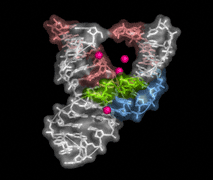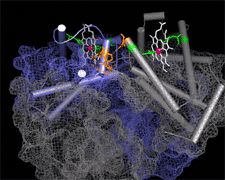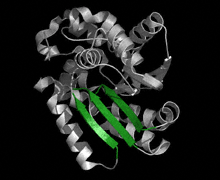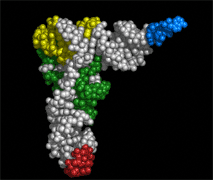



 |
 |
 |
 |
Understanding of biochemical processes, such as catalysis or gene regulation, is greatly facilitated by structural analysis of biological macromolecules at atomic resolution. This notion has lead to determination of three-dimensional structures of many biomolecules and macromolecular assemblies. For example, the Protein Data Bank contained over 75,000 experimentally determined macromolecular structures as of August 2011.
Analysis of macromolecular structures is also an integral part of biochemical education. Modern textbooks contain many illustrations depicting structural and functional aspects of biological macromolecules. Programs, such as Jmol and RasMol make visualization of protein structures accessible from personal computers. Interactive visualization tutorials are often used as effective teaching tools in biochemistry courses. In a typical approach, students are directed to websites where they can explore structures of proteins of interest using a preconfigured tutorial interface. However, use of macromolecular visualization in classroom settings is still often limited because instructors may not have access to suitable images or find it time-consuming to manipulate complex structures in order to illustrate one or two concepts being discussed in class.
The goal of this website is to facilitate visualization-based instruction by offering access to structure files, static images, movie clips, and pre-configured visualization scripts for many macromolecules that are discussed in undergraduate and graduate biochemistry courses. The images and movie clips can be readily incorporated into slideshows. The structure files and visualization scripts allow quick generation of interactive three-dimensional views of the important parts of the structure with the help of program PyMOL. Each image is accompanied by a brief annotation that documents the purpose of the image.
At the present time, files are organized according to UCSB course names.
You can also search for a specific molecule in our webspace |